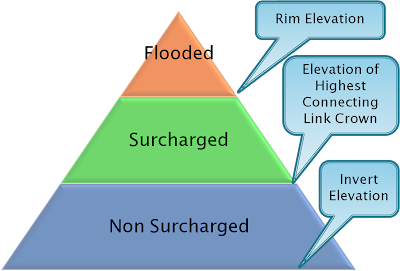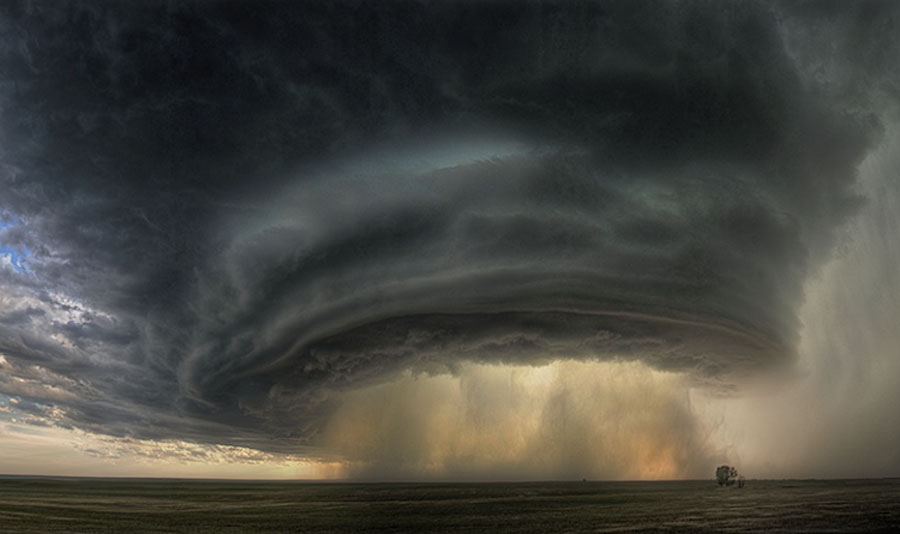|
Cold air sweeping southwards behind the fierce snowstorm that roared through the Upper Midwest over the weekend is bringing record low temperatures over much of the Southeast this morning. However, preliminary indications are that Central Florida's orange groves fared better than expected, and there were no reports of widespread damage to the orange crop. Record lows this morning included 32°F at West Palm Beach, 50°F in Key West, and 20°F in Jacksonville. Cold air flowing over the relatively warm waters of Lake Erie and Lake Ontario are creating heavy lake-effect snows, with 5 – 9 inches of new snow expected near Cleveland, OH today, and 2 – 5 inches near Syracuse, NY.
Hot Arctic-Cold Continents
I'm in San Francisco this week for the world's largest gathering of Earth scientists, the annual American Geophysical Union (AGU) conference. Over 15,000 scientists have descended upon the city, and there are a ridiculous number of fascinating talks on every conceivable aspect of Earth science, including, of course, climate change. One talk I attended yesterday was called, "Hot Arctic-Cold Continents: Hemispheric Impacts of Arctic Change.” The talk was given by Dr. Jim Overland of NOAA's Pacific Marine Environmental Laboratory, one of the world's experts on Arctic weather and climate (I spent many long months flying in the Arctic with him during the three Arctic field programs I participated in during the late 1980s.) Dr. Overland discussed the remarkable winter of 2009 – 2010, which brought record snowstorms to Europe and the U.S. East Coast, along with the coldest temperatures in 25 years, but also brought the warmest winter on record to Canada and much of the Arctic. He demonstrated that the Arctic is normally dominated by low pressure in winter, and a “Polar Vortex” of counter-clockwise circulating winds develops surrounding the North Pole. However, during the winter of 2009-2010, high pressure replaced low pressure over the Arctic, and the Polar Vortex weakened and even reversed at times, with a clockwise flow of air replacing the usual counter-clockwise flow of air around the pole. This unusual flow pattern allowed cold air to spill southwards and be replaced by warm air moving poleward. This pattern is kind of like leaving the refrigerator door ajar--the refrigerator warms up, but all of the cold air spills out into the house.

Figure 1. Conceptual diagram of how Arctic sea ice loss affects winter weather, from NOAA's Future of Arctic Sea Ice and Global Impacts web page.
The North Atlantic Oscillation (NAO)
This is all part of a natural climate pattern known as the North Atlantic Oscillation (NAO), which took on its most extreme configuration in 145 years of record keeping during the winter of 2009 – 2010. The NAO is a climate pattern in the North Atlantic Ocean of fluctuations in the difference of sea-level pressure between the Icelandic Low and the Azores High. It is one of oldest known climate oscillations--seafaring Scandinavians described the pattern several centuries ago. Through east-west oscillation motions of the Icelandic Low and the Azores High, the NAO controls the strength and direction of westerly winds and storm tracks across the North Atlantic. A large difference in the pressure between Iceland and the Azores (positive NAO) leads to increased westerly winds and mild and wet winters in Europe. Positive NAO conditions also cause the Icelandic Low to draw a stronger south-westerly flow of air over eastern North America, preventing Arctic air from plunging southward. In contrast, if the difference in sea-level pressure between Iceland and the Azores is small (negative NAO), westerly winds are suppressed, allowing Arctic air to spill southwards into eastern North America more readily. Negative NAO winters tend to bring cold winters to Europe and the U.S. East Coast, but leads to very warm conditions in the Arctic, since all the cold air spilling out of the Arctic gets replaced by warm air flowing poleward.
The winter of 2009 - 2010 had the most extreme negative NAO since record keeping began in 1865. This "Hot Arctic-Cold Continents pattern", resulting in a reversal of Polar Vortex and high pressure replacing low pressure over the Arctic, had occurred previously in only four winters during the past 160 years—1969, 1963, 1936, and 1881. Dr. Overland called the winter of 2009 – 2010 at least as surprising at the record 2007 loss of Arctic sea ice. He suspected that Arctic sea ice loss was a likely culprit for the event, since Francis et al. (2009) found that during 1979 - 2006, years that had unusually low summertime Arctic sea ice had a 10 - 20% reduction in the temperature difference between the Equator and North Pole. This resulted in a weaker jet stream with slower winds that lasted a full six months, through fall and winter. The weaker jet caused a weaker Aleutian Low and Icelandic Low during the winter, resulting in a more negative North Atlantic Oscillation, allowing cold air to spill out of the Arctic and into Europe and the Eastern U.S. Dr. Overland also stressed that natural chaos in the weather/climate system also played a role, as well as the El Niño/La Niña cycle and natural oscillations in stratospheric winds. Not every year that we see extremely high levels of Arctic sea ice loss will have a strongly negative NAO winter. For example, the record Arctic sea ice loss year of 2007 saw only a modest perturbation to the Arctic Vortex and the NAO during the winter of 2007 – 2008.
However, the strongly negative NAO is back again this winter. High pressure has replaced low pressure over the North Pole, and according to NOAA, the NAO index during November 2010 was the second lowest since 1950. This strongly negative NAO has continued into December, and we are on course to have a top-five most extreme December NAO. Cold air is once again spilling southwards into the Eastern U.S. And Europe, bringing record cold and fierce snowstorms. At the same time, warm air is flowing into the Arctic to replace the cold air spilling south--temperatures averaged more than 10°C (18°F) above average over much of Greenland so far this month. The latest 2-week forecast from the GFS model predicts that the Hot Arctic-Cold Continents pattern will continue for the next two weeks. However, the coldest air has sloshed over into Europe and Asia, and North America will see relatively seasonable temperatures the next two weeks.
For more information
The NOAA web page, Future of Arctic Sea Ice and Global Impacts has a nice summary of the “Hot Arctic-Cold Continents” winter pattern.
NOAA's Arctic Report Card is also a good source of information.
Francis, J. A., W. Chan, D. J. Leathers, J. R. Miller, and D. E. Veron, 2009: Winter northern hemisphere weather patterns remember summer Arctic sea-ice extent. Geophys. Res. Lett., 36, L07503, doi:10.1029/2009GL037274.
Honda, M., J. Inoue, and S. Yamane, 2009: Influence of low Arctic sea-ice minima on anomalously cold Eurasian winters. Geophys. Res. Lett., 36, L08707, doi:10.1029/2008GL037079.
Overland, J. E., and M. Wang, 2010: Large-scale atmospheric circulation changes associated with the recent loss of Arctic sea ice. Tellus, 62A, 1.9.
Petoukhov, V., and V. Semenov, 2010: A link between reduced Barents-Kara sea ice and cold winter extremes over northern continents. J. Geophys. Res.-Atmos., ISSN 0148-0227.
Seager, R., Y. Kushnir, J. Nakamura, M. Ting, and N. Naik (2010), Northern Hemisphere winter snow anomalies: ENSO, NAO and the winter of 2009/10, Geophys. Res. Lett., 37, L14703, doi:10.1029/2010GL043830.
|






![Well This Is Something You Don’t See Every Day of the Day: A Connecticut man accidentally stumbled onto a shoebox containing a set of never-before-seen photos snapped by his in-laws from the time the U.S. Army Corp of Engineers turned off the water on the American side of Niagara Falls. From the Daily Mail: In June 1969, U.S. engineers diverted the flow of the Niagara River away from the American side of the falls for several months. Their plan was to remove the large amount of loose rock from the base of the waterfall, an idea which they eventually abandoned due to expense in November of that year. […] To achieve this the army had to build a 600ft dam across the Niagara River, which meant that 60,000 gallons of water that flowed ever second was diverted over the larger Horseshoe Falls which flow entirely on the Canadian side of the border. The dam itself consisted of 27,800 tons of rock, and on June 12, 1969, after flowing continuously for over 12,000 years, the American Falls stopped. Above: American Falls, then and now. [fark.]](http://26.media.tumblr.com/tumblr_ldhs24D1TY1qzpwi0o1_500.jpg)






